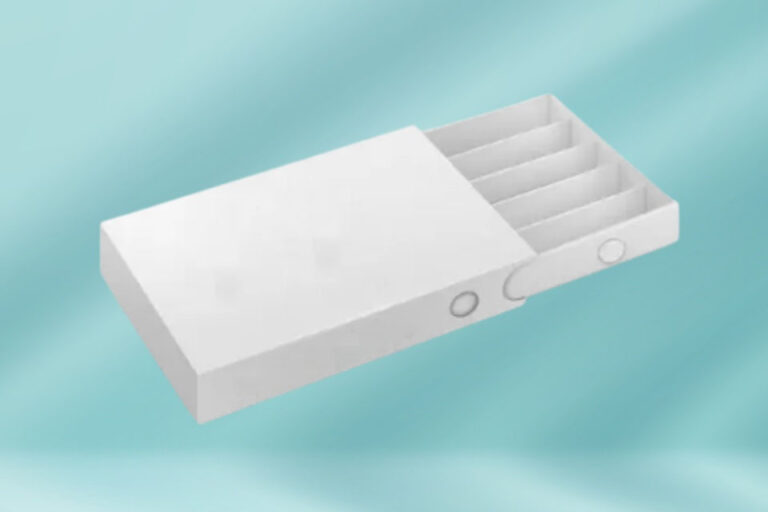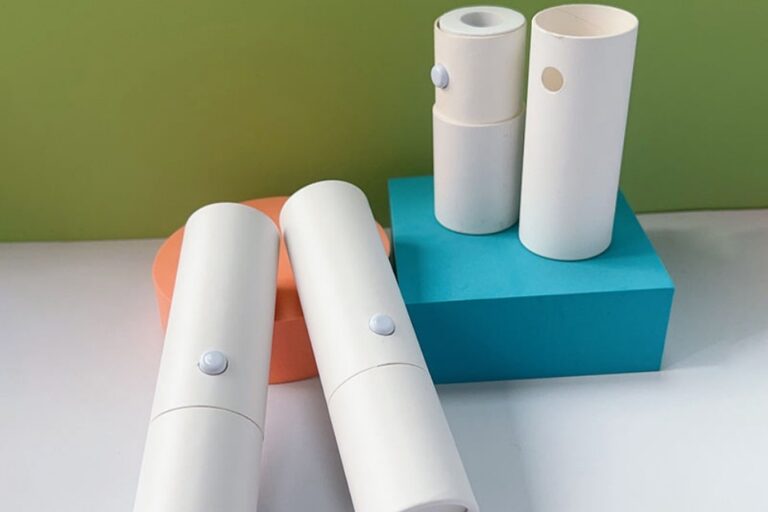-
Gushu Industrial Zone Xixiang Street, Bao'an District, Shenzhen

Reducing The Size of Cannabis Packaging Box Brings Big Sustainability Benefits
Cannabis brand STIIIZY redesigns its vape pod packaging with 25% less material, resulting in sustainability and efficiency gains and reduced costs.
In the rapidly growing cannabis industry, sustainability is becoming more than a marketing buzzword — it’s a business necessity. As brands scale, every inch of packaging and every gram of material adds up, impacting both the environment and the bottom line.
One brand leading this change is STIIIZY, part of Los Angeles-based cannabis holding company Shryne Group. Known for its innovative approach and authentic California roots, STIIIZY recently reimagined its vape pod packaging, cutting material use by 25%. The result? Lower costs, greater efficiency, and a meaningful step toward a greener future.
Table of Contents
A Brand Built on Innovation and Responsibility
STIIIZY was “born out of authentic Los Angeles culture and a desire to provide the highest-quality cannabis products at affordable prices,” says Jackie Kim, the company’s Director of Integrated Marketing. The name itself comes from the term “steez” — style with ease — and the three “I’s” stand for Innovate, Inspire, and Influence.
With STIIIZY now recognized as California’s best-selling cannabis pod brand and the third best-selling in the U.S., the company felt a growing responsibility to lead by example. “With great power comes great responsibility,” Kim notes. “As our reach grew, so did our obligation to make sustainable choices.”

The Challenge: Redesigning a Best-Selling Package
STIIIZY’s vape pod system includes two components: a custom pod filled with high-grade cannabis oil, and a sleek rechargeable battery. While the product itself was state-of-the-art, the packaging — a paperboard box with a built-in tray — had room for improvement.
Originally, the inner tray held the pod on one side, leaving empty space on the other. “We realized we were wasting materials without adding any value,” says Kim. The team saw an opportunity to streamline both the design and the user experience.
In late 2019, STIIIZY’s in-house design team began work on a complete packaging overhaul. Having struggled in the past with third-party designers unfamiliar with cannabis regulations, the company had built its own creative department — ensuring every decision aligned with brand, culture, and compliance.
The Solution: Smart Design for a Smaller Footprint
The team’s guiding principle was simple: use less material without compromising safety or appeal.
1. Right-sizing the carton
By aligning the outer box dimensions with the tray size, STIIIZY eliminated unused space, cutting excess paperboard and reducing overall material by over 25%.
2. Going paperless with QR codes
A printed user manual — once included in every package — was replaced with a QR code printed on the inner tray. This digital shift gives consumers easy access to instructions, disclaimers, and product details, while eliminating unnecessary paper waste.
“We realized things like this were a total waste of money, material, and production time,” says Kim.
3. Reconfiguring the child-resistant (CR) feature
In the old design, the CR button was on the side panel. The new design moves it to the back, allowing a tighter box structure. The latch mechanism — a circular die-cut button pressed to release a sliding tray — remains intuitive but now fits within a smaller footprint.
4. Combining functions for efficiency
Previously, STIIIZY used two stickers: one tamper-evident seal and one batch label. Now, a single dual-purpose label does both, ensuring compliance while reducing adhesive waste and application time.
5. Strengthening anti-counterfeit protection
To guarantee authenticity, STIIIZY expanded its holographic sticker program. Once limited to California, it’s now used on all packaging, reinforcing consumer trust across every market.

The Impact: Small Changes, Big Results
At first glance, STIIIZY’s new packaging looks nearly identical — but behind the scenes, the redesign is transforming operations.
“Today we produce millions of units,” says Kim. “Cutting packaging size and removing inserts has an enormous cumulative effect — on our costs, our labor time, and our environmental footprint.”
By producing more efficient packaging:
- Material use dropped by 25%
- Production time decreased, allowing faster fulfillment
- Waste was reduced, improving sustainability metrics
- Costs fell, amplifying profitability
And the ripple effect extends beyond manufacturing. Smaller boxes reduce transportation volume, allowing more units per shipment and lowering carbon emissions from logistics.

Lessons for the Cannabis Industry
STIIIZY’s journey demonstrates that sustainability doesn’t always require high-tech solutions or expensive new materials. Sometimes, it’s about rethinking existing designs — removing what’s unnecessary, combining functions, and optimizing space.
In an industry where packaging plays a critical role in compliance, branding, and consumer trust, STIIIZY proves that eco-conscious design can drive real business value.
As the cannabis sector continues to grow, more brands are recognizing that sustainability and profitability aren’t opposites — they’re partners. And by reducing packaging size, STIIIZY is showing how thoughtful innovation can benefit both the planet and the bottom line.

Comments
ASTM D3475 biodegradable pre roll packaging Bulk Wholesale Packaging cannabis branding cannabis packaging cannabis packaging compliance cannabis packaging manufacturer cannabis packaging wholesale Cheap Cannabis Packaging child-resistant child-resistant packaging child resistant cannabis packaging child resistant packaging child resistant pre roll packaging China packaging manufacturer Concentrate Container Packaging concentrate containers custom cannabis packaging custom pre-roll packaging custom pre roll boxes custom vape boxes Dispensary Packaging eco friendly packaging ISO 8317 marijuana packaging OEM/ODM OEM/ODM cannabis packaging OEM/ODM Wholesale OEM cannabis packaging OEM ODM Cannabis Packaging OEM ODM Packaging paper tube packaging pre-roll packaging Pre Roll Packaging sustainable cannabis packaging Sustainable Packaging Sustainable Vape Packaging tamper-evident Tamper-Evident Packaging TPD compliance Vape Cartridge Boxes vape cartridge packaging wholesale cannabis packaging Zhibang Zhibang China factory



